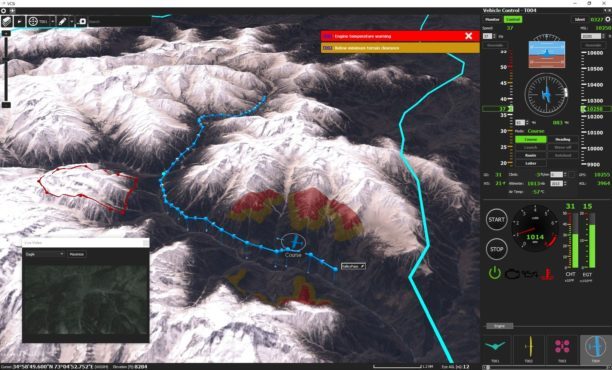
One of the world’s largest defense/aerospace conglomerates is making real-time, integrated air control of multiple drones a reality.
At the recent Unmanned Systems Exhibition and Conference in Abu Dhabi, Lockheed Martin announced the launch of VCSi, a software solution that allows multiple users to simultaneously control dozens of drones during a range of surveillance and reconnaissance missions.
“VCSi is a safe and reliable software platform that can be adapted to any vehicle – from one you can hold in your hand, to a 50,000-pound machine; from a vehicle that flies for a few minutes, to a vehicle that flies for months at a time,” said John Molberg, business development manager, Lockheed Martin CDL Systems. “The user can integrate as many vehicles as required to complete their missions, including boats, quadcopters, fixed-wing aircraft or even high-altitude pseudo satellites. Across commercial or military missions, VCSi is adaptable to the challenge and further extends the power of the human-machine team.”
The software works with multiple vehicle types and can integrate drone flights with boat and ground vehicles using a “fly-by-mouse” interface. Plug-in architecture allows for custom content across multiple platforms.
Lockheed Martin’s Drone History
2017
The company released a test video demonstrating the 30-kilowatt class Advanced Test High Energy Asset system, downing five fixed-wing Outlaw drones at the U.S. Army’s White Sands Missile Range in New Mexico. Lockheed Martin funded the counter-drone program to defeat airborne targets in flight by causing loss of control and structural failure.
The OUTRIDER is released — a drone designed to provide “enhanced situational awareness in environments where launching a conventional UAV is not practical.” Designed with a patented launch canister, the UAV has a high degree of wind tolerance. Developed at Lockheed UK’s Havant facility, the drone is four inches wide, weighs 3.7 pounds and can reach speeds up to 57 mph. It can also stay airborne for more than two hours.
2015
The company demonstrated a new UAS air-traffic control system by showcasing two drones working in tandem to fight fires while maintaining contact with air traffic control. The military drones included the Stalker XE, a 12-foot wingspan craft that can fly up to 45 mph at altitudes up to 15,000 feet with an 8-hour flight time. Built by Kaman combined with Lockheed Martin equipment, the K-MAX drone can carry 6,000 pounds of cargo and fly up to 115 mph.
2012
Lockheed Martin partnered with Laser Motive to unveil the Stalker, a drone that can fly 48 continuous hours using a laser-based charging system.
Jason is a longstanding contributor to DroneLife with an avid interest in all things tech. He focuses on anti-drone technologies and the public safety sector; police, fire, and search and rescue.
Beginning his career as a journalist in 1996, Jason has since written and edited thousands of engaging news articles, blog posts, press releases and online content.
Email Jason
TWITTER:@JasonPReagan
Subscribe to DroneLife here.